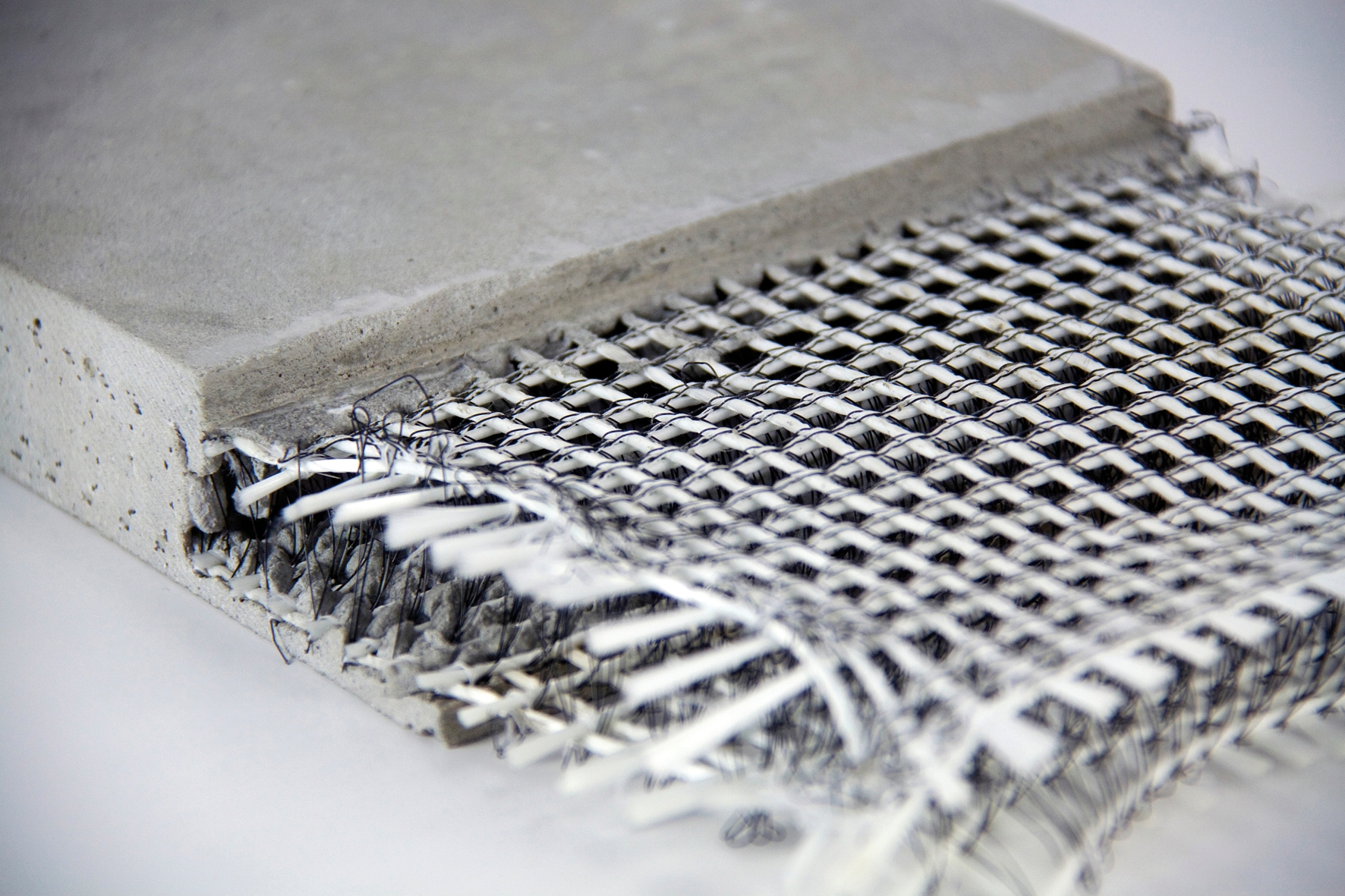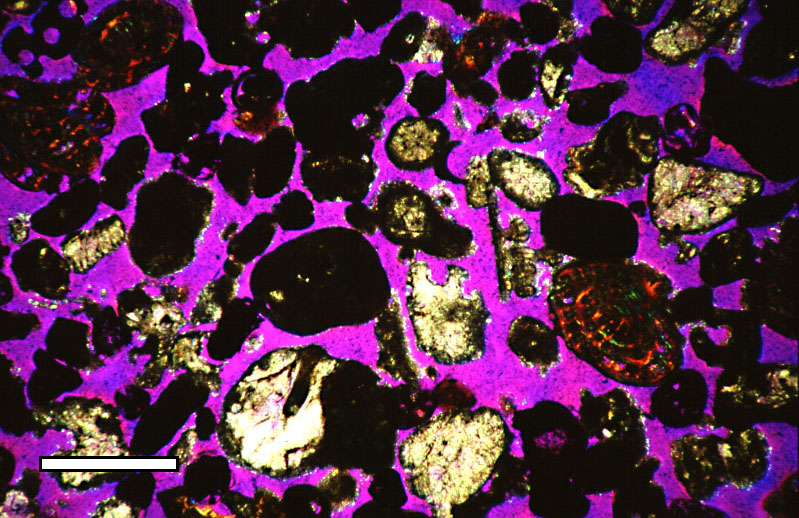|
3D Composites
Three-dimensional composites use fiber preforms constructed from yarns or tow (fibre), tows arranged into complex three-dimensional structures. These can be created from a 3D weaving process, a 3D knitting process, a 3D braided fabrics, 3D braiding process, or a 3D lay of short fibers. A resin is applied to the 3D preform to create the composite material. Three-dimensional composites are used in highly engineered and highly technical applications in order to achieve complex mechanical properties. Three-dimensional composites are engineered to react to stresses and strains in ways that are not possible with traditional composite materials composed of single direction tows, or 2D woven composites, sandwich composites or stacked laminate materials. 3D Woven Composites Three dimensional woven fabrics are fabrics that could be formed to near net shape with considerable thickness. There is no need for layering to create a part, because a single fabric provides the full three-dimensional r ... [...More Info...] [...Related Items...] OR: [Wikipedia] [Google] [Baidu] |
Yarn
Yarn is a long continuous length of interlocked fibres, used in sewing, crocheting, knitting, weaving, embroidery, ropemaking, and the production of textiles. '' Thread'' is a type of yarn intended for sewing by hand or machine. Modern manufactured sewing threads may be finished with wax or other lubricants to withstand the stresses involved in sewing. Embroidery threads are yarns specifically designed for needlework. Yarn can be made of a number of natural or synthetic materials, and comes in a variety of colors and thicknesses (referred to as "weights"). Although yarn may be dyed different colours, most yarns are solid coloured with a uniform hue. Etymology The word " yarn" comes from Middle English, from the Old English , akin to Old High German ', "yarn", Dutch ', Ancient Greek (''chordē'', "string"), and Sanskrit , "band". It originally referred to entrails. History The human production of yarn is known to have existed since the Stone Age and earlier p ... [...More Info...] [...Related Items...] OR: [Wikipedia] [Google] [Baidu] |
Formability
Formability is the ability of a given metal workpiece to undergo plastic deformation without being damaged. The plastic deformation capacity of metallic materials, however, is limited to a certain extent, at which point, the material could experience tearing or fracture (breakage). Processes affected by the formability of a material include: rolling, extrusion, forging, rollforming, stamping, and hydroforming. Fracture strain A general parameter that indicates the formability and ductility of a material is the fracture strain which is determined by a uniaxial tensile test (see also fracture toughness). The strain identified by this test is defined by elongation with respect to a reference length. For example, a length of is used for the standardized uniaxial test of flat specimens, pursuant to EN 10002. It is important to note that deformation is homogeneous up to uniform elongation. Strain subsequently localizes until fracture occurs. Fracture strain is not an engineering s ... [...More Info...] [...Related Items...] OR: [Wikipedia] [Google] [Baidu] |
3D Textiles
3D textiles are three-dimensional structures made with different manufacturing methods such as weaving, knitting, braiding, or nonwoven, or made with alternative technologies. 3D textiles are produced with three planar geometry, opposed to 2D textiles that are made on two planes. The weave in 2D textiles is perpendicular. The yarn is fed along two axis: length (x-axis) and width (y-axis), while 3D textiles also have a perpendicular weave, but they have an extra yarn with an angular feeding (z-axis) which creates thickness. 3D weaves are orthogonal weave structures, multilayer structures, and angle interlocks. 3D textiles have more manufacturing opportunities, various properties, and a broader scope of applications. These textiles have a wide range of applications, but they are most commonly used where performance is the primary criterion, such as technical textiles. Composite materials, manufacturing is one of the significant areas of using 3D textiles. 3D structures have two kinds ... [...More Info...] [...Related Items...] OR: [Wikipedia] [Google] [Baidu] |
Horn Gear
A braiding machine is a device that interlaces three or more strands of yarn or wire to create a variety of materials, including rope, reinforced hose, covered power cords, and some types of lace. Braiding materials include natural and synthetic yarns, metal wires, leather tapes, and others. Process #Fibers are spun into yarn. #One or more yarns are twisted together to form a strand. #Strands are wound onto bobbins. #Bobbins are mounted on carriers. #Carriers are mounted onto a braiding machine, where the braiding takes place. Horn gear braider In a horn gear braider, bobbins of thread pass one another to the left and right on pseudo-sinusoidal tracks. The bobbins are mounted on spool carriers that are driven by a series of ''horn gears''. A horn gear is a notched disk driven by a spur gear below on the same shaft; bobbins are transferred between notches of adjacent gears. These gears lie below the track plate that the bobbin carriers ride on. The gears must be driven at multipl ... [...More Info...] [...Related Items...] OR: [Wikipedia] [Google] [Baidu] |
Braids2
A braid (also referred to as a plait; ) is a complex structure or pattern formed by interlacing three or more strands of flexible material such as textile yarns, wire, or hair. The simplest and most common version is a flat, solid, three-stranded structure. More complex patterns can be constructed from an arbitrary number of strands to create a wider range of structures (such as a fishtail braid, a five-stranded braid, rope braid, a French braid and a waterfall braid). The structure is usually long and narrow with each component strand functionally equivalent in zigzagging forward through the overlapping mass of the others. It can be compared with the process of weaving, which usually involves two separate perpendicular groups of strands ( warp and weft). Historically, the materials used have depended on the indigenous plants and animals available in the local area. During the Industrial Revolution, mechanized braiding equipment was invented to increase production. The braiding ... [...More Info...] [...Related Items...] OR: [Wikipedia] [Google] [Baidu] |
I-beam
An I-beam is any of various structural members with an - (serif capital letter 'I') or H-shaped cross section (geometry), cross-section. Technical terms for similar items include H-beam, I-profile, universal column (UC), w-beam (for "wide flange"), universal beam (UB), rolled steel joist (RSJ), or double-T (especially in Polish language, Polish, Bulgarian language, Bulgarian, Spanish language, Spanish, Italian language, Italian, and German language, German). I-beams are typically made of structural steel and serve a wide variety of construction uses. The horizontal elements of the are called flanges, and the vertical element is known as the "web". The web resists shear forces, while the flanges resist most of the bending moment experienced by the beam. The Euler–Bernoulli beam equation shows that the -shaped section is a very efficient form for carrying both bending and shearing (physics), shear loads in the plane of the web. On the other hand, the cross-section has a reduced ... [...More Info...] [...Related Items...] OR: [Wikipedia] [Google] [Baidu] |
Resin
A resin is a solid or highly viscous liquid that can be converted into a polymer. Resins may be biological or synthetic in origin, but are typically harvested from plants. Resins are mixtures of organic compounds, predominantly terpenes. Common resins include amber, hashish, frankincense, myrrh and the animal-derived resin, shellac. Resins are used in varnishes, adhesives, food additives, incenses and perfumes. Resins protect plants from insects and pathogens, and are secreted in response to injury. Resins repel herbivores, insects, and pathogens, while the volatile natural phenol, phenolic compounds may attract benefactors such as predators of insects that attack the plant. Composition Most plant resins are composed of terpenes. Specific components are alpha-Pinene, alpha-pinene, pinene, beta-pinene, carene, delta-3 carene, and sabinene, the monocyclic terpenes limonene and terpinolene, and smaller amounts of the tricyclic sesquiterpenes, longifolene, caryophyllene, and cad ... [...More Info...] [...Related Items...] OR: [Wikipedia] [Google] [Baidu] |
Porosity
Porosity or void fraction is a measure of the void (i.e. "empty") spaces in a material, and is a fraction of the volume of voids over the total volume, between 0 and 1, or as a percentage between 0% and 100%. Strictly speaking, some tests measure the "accessible void", the total amount of void space accessible from the surface (cf. closed-cell foam). There are many ways to test porosity in a substance or part, such as industrial CT scanning. The term porosity is used in multiple fields including pharmaceutics, ceramics, metallurgy, materials, manufacturing, petrophysics, hydrology, earth sciences, soil mechanics, rock mechanics, and engineering. Void fraction in two-phase flow In gas-liquid two-phase flow, the void fraction is defined as the fraction of the flow-channel volume that is occupied by the gas phase or, alternatively, as the fraction of the cross-sectional area of the channel that is occupied by the gas phase. Void fraction usually varies from location to l ... [...More Info...] [...Related Items...] OR: [Wikipedia] [Google] [Baidu] |
Delamination
Delamination is a mode of failure where a material fractures into layers. A variety of materials, including Lamination, laminate Composite material, composites and concrete, can fail by delamination. Processing can create layers in materials, such as steel formed by Rolling (metalworking), rolling and plastics and metals from 3D printing which can fail from layer separation. Also, surface coatings, such as paints and films, can delaminate from the coated substrate. In Lamination, laminated composites, the adhesion between layers often fails first, causing the layers to separate. For example, in Fibre-reinforced plastic, fiber-reinforced plastics, sheets of high strength reinforcement (e.g., Carbon fibers, carbon fiber, fiberglass) are bound together by a much weaker polymer matrix (e.g., epoxy). In particular, loads applied perpendicular to the high strength layers, and shear loads can cause the polymer matrix to fracture or the fiber reinforcement to debond from the polymer. Del ... [...More Info...] [...Related Items...] OR: [Wikipedia] [Google] [Baidu] |
Tow (fibre)
In the textile industry, a tow (or hards) is a coarse, broken fibre, removed during the processing of flax, hemp, or jute and separated from the shives. Flax tows are often used as upholstery stuffing and oakum. Tows in general are frequently cut up to produce staple fibre. The very light color of flax tow is the source of the word " towhead", meaning a person with naturally light blond hair. Composite materials In the artificial fibre and composites industries, a tow is an untwisted bundle of continuous filaments, in particular of acrylic, carbon fibres, or viscose rayon. Tows are designated either by their total tex Tex, TeX, TEX, may refer to: People and fictional characters * Tex (nickname), a list of people and fictional characters with the nickname * Tex Earnhardt (1930–2020), U.S. businessman * Joe Tex (1933–1982), stage name of American soul singer ... (mass in grams per 1000 m length) or by the number of fibres they contain. For example, a 12K tow c ... [...More Info...] [...Related Items...] OR: [Wikipedia] [Google] [Baidu] |







